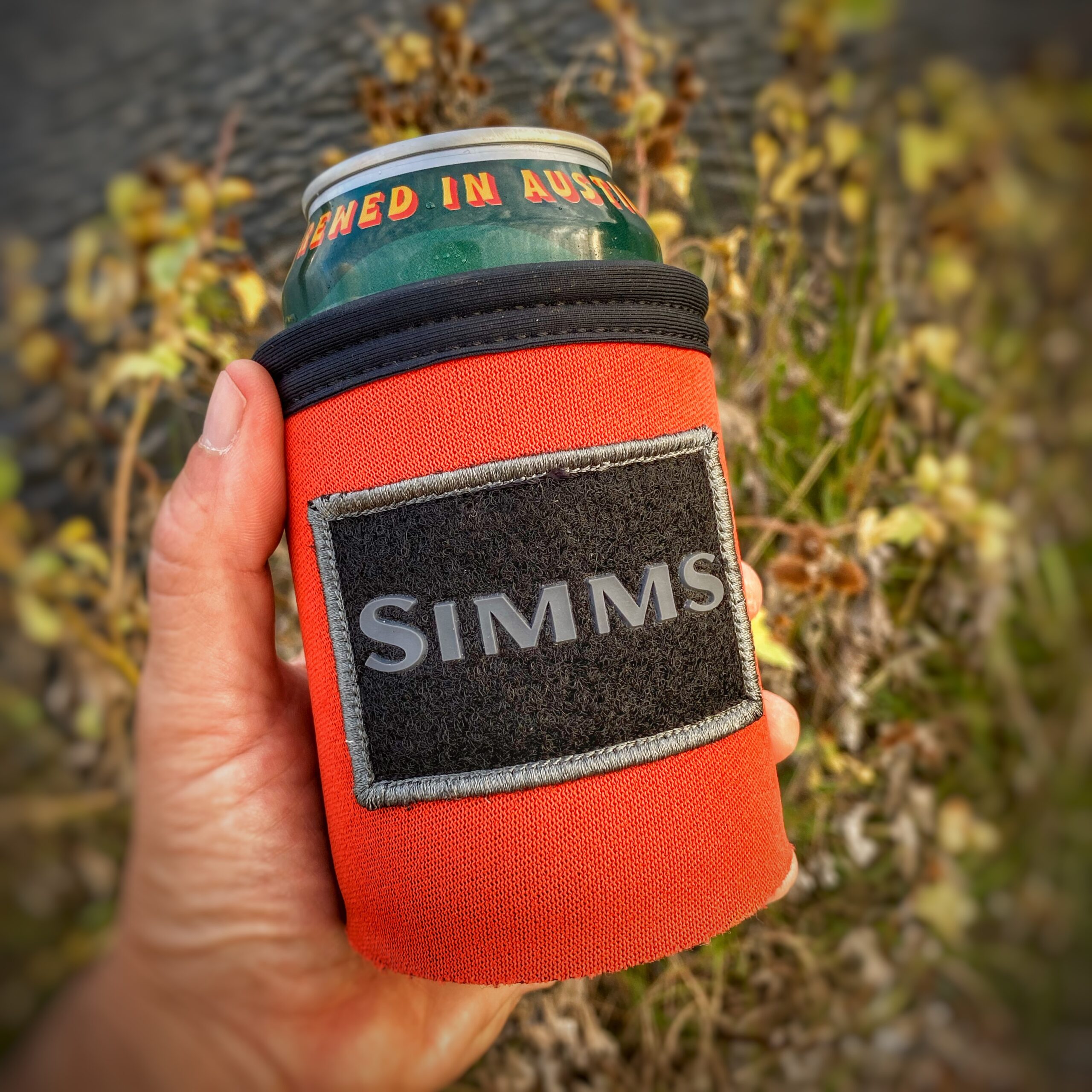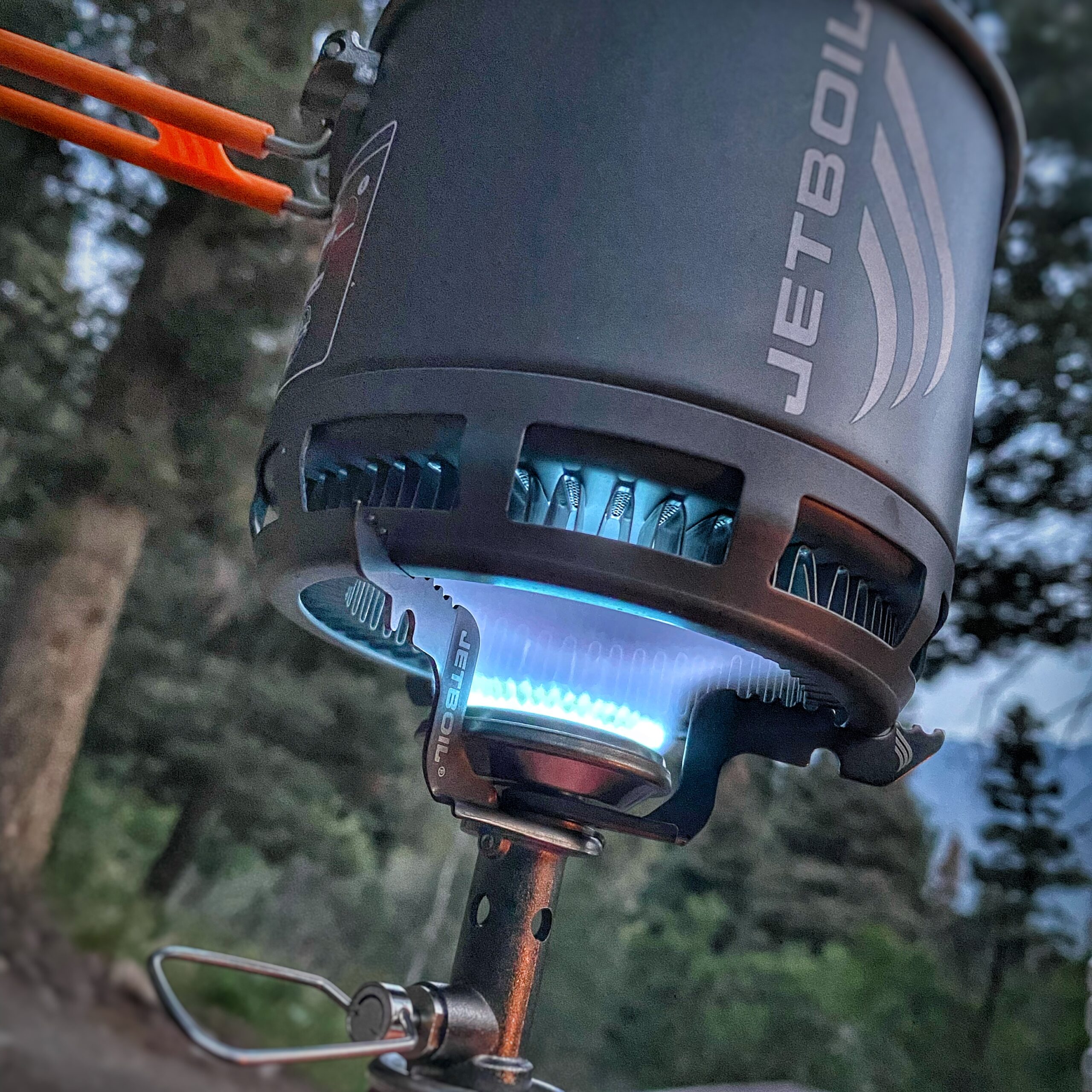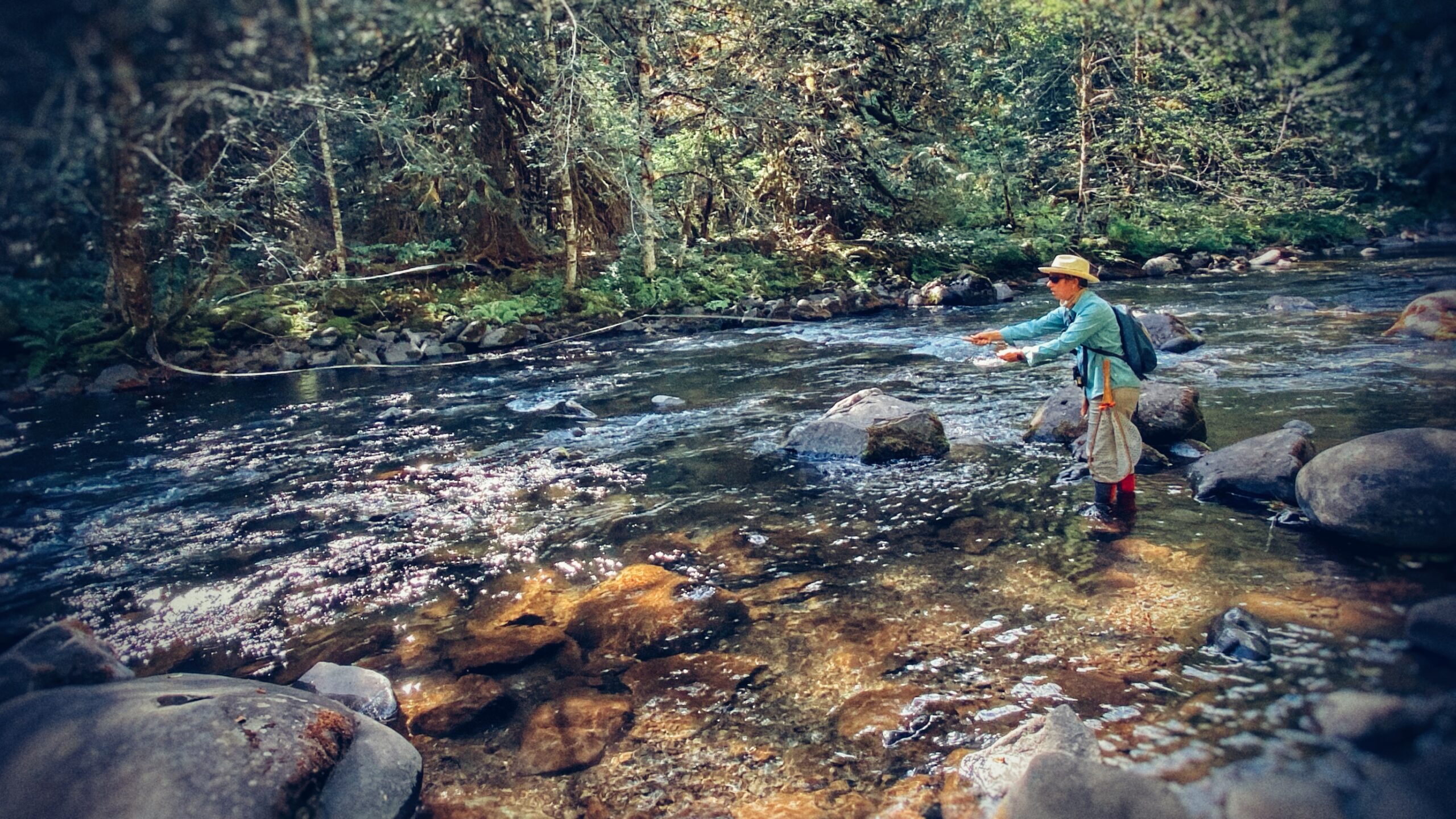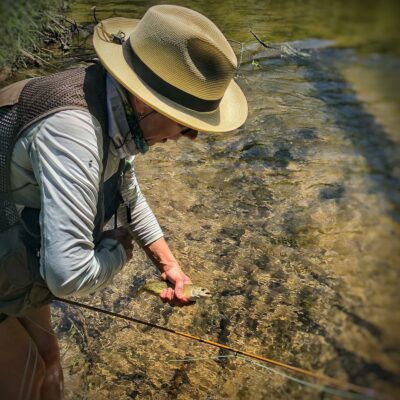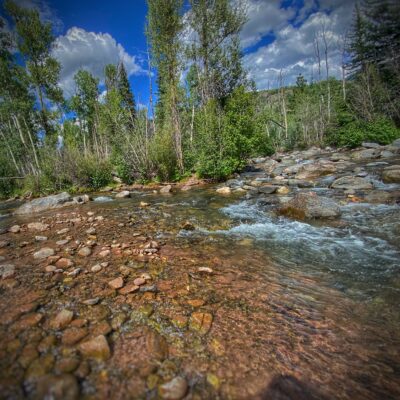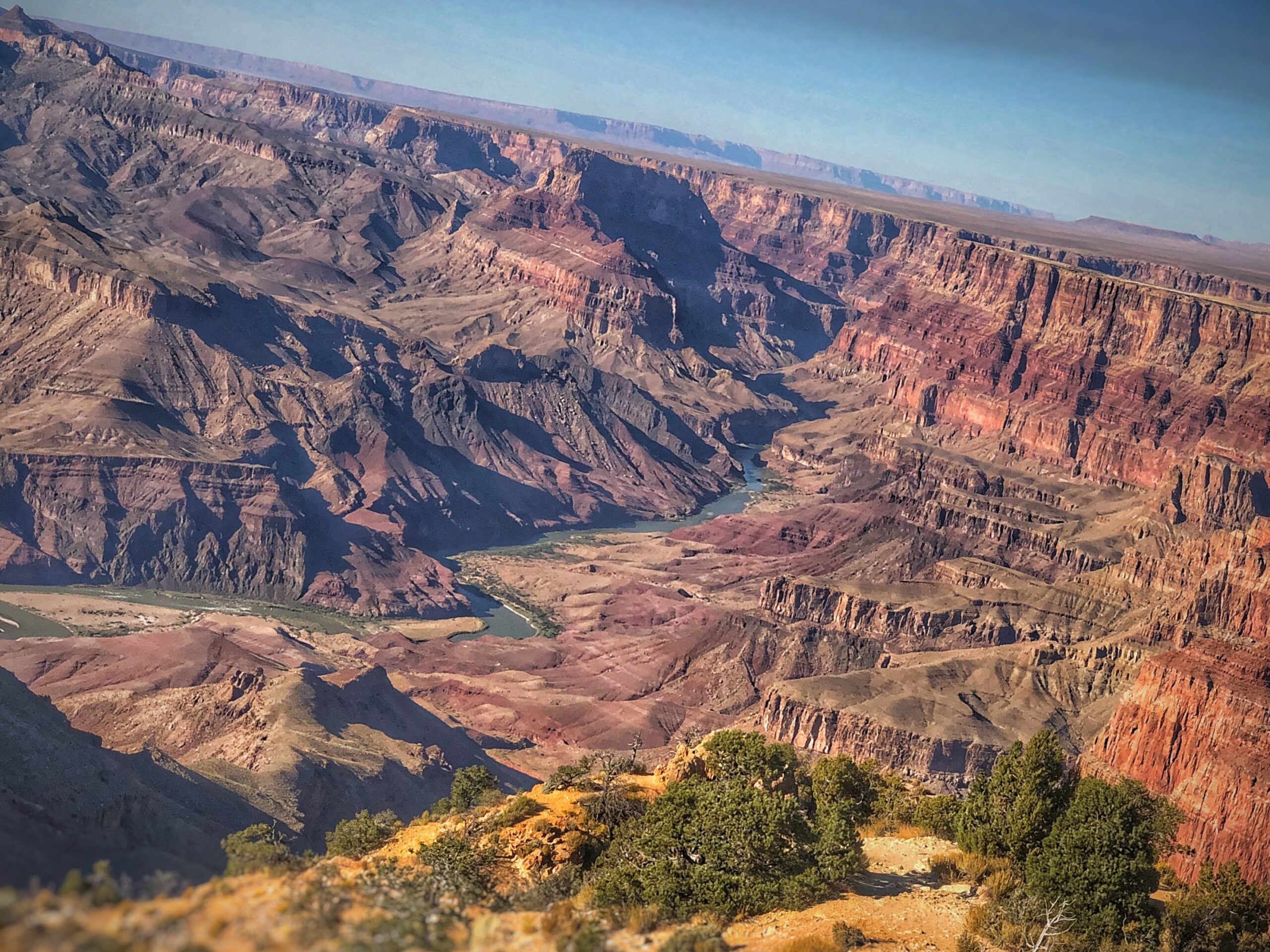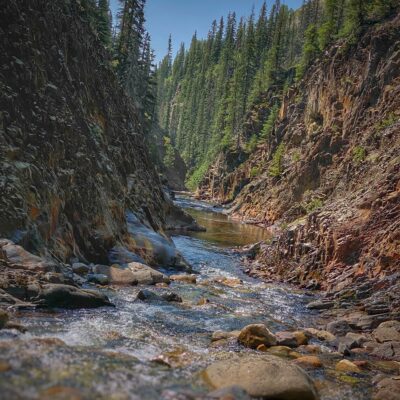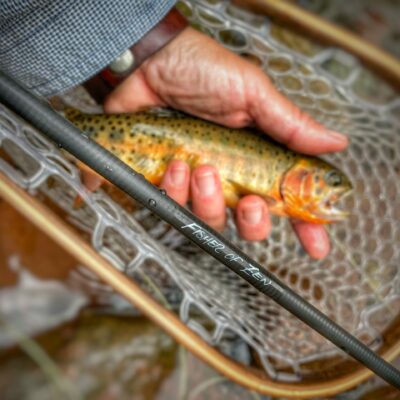June 5, 2001-November 27, 2018
“It was a great run. It was a great life. It was a great love.
Everything about Mina always felt like a BONUS. When we found each other, I was visiting a breeder to check out some younger, salt & pepper schnauzer pups to decide which one I wanted to put my name on. Here comes this little black ball of energy in from the kitchen and starts dancing and playing around. “Who are you?” I say (I didn’t know there was such a thing as a black schnauzer). She was 8 weeks old and the last left of her litter. Her one remaining brother had been taken home by a family that morning. She was the runt, and had a little white hair on one of her back feet that made her not fit to be a show dog. So everyone passed her over. Of course they did. She was meant for me. BONUS.
The hair of black (and white – there are those too) schnauzers is almost always softer and less wiry than the grey ones. BONUS.
She potty trained well, was super loving, spunky and social…and took quickly to being my sidekick…everywhere. BONUS.
For years she was just that. Her little soul was a consistent source of joy and unconditional love with a great, magnetic energy that was undeniable. She was there to celebrate with me at the sunny mountaintop moments and was a soft, warm, comforting snuggle in the chill of the valley. There are good dogs, there are great dogs, and then there are little Buddhas in dog suits. She was the latter. BONUS.
When she was 11, she started having seizures. The vet said it was either canine epilepsy or a slow-growing brain tumor but the treatment of anti-seizure meds would be the same either way. And that if it was a brain tumor, she likely wouldn’t be with us very long. It has since been all but confirmed that it was, indeed, a slow growing tumor…and she carried on for another 6.5 years (she was, after all, a honey badger at heart). So every additional year she decided to stick around and keep sharing joy and love felt like a…you guessed it…BONUS.
Just before she turned 17, on the way to TX, she had a terrible cluster of seizures. 9 in less than 14 hours. Just one grand mal seizure is exhausting, and that many in a row had her nearly catatonic for another 18+ hours. During that dark night, I held her…and cried…and comforted her…and cried. In the years after her diagnosis of likely brain tumor, as I continued to marvel at her longevity in spite if it all, we would have talks that consisted of me thanking her for sticking around, my commitment to always be here for her for as long as she wanted to keep doing that, and asking her please to communicate as best she could when she was ready to transition to something else so that I could find the courage, if necessary, to be there for her in that as well. I was beginning to think that’s what was happening then. That’s why all the tears…I thought it might be time to say farewell for now. But at around 2am that morning, she lifted her head for the first time in nearly 24 hours and wanted a drink of water. Thus began her recovery back to a similar state of normal (considering her age). Less than a month later, she made it to 17 and we celebrated with snuggles and ice cream. BONUS.
Over the course of that next few months, it was becoming obvious that we were in the late winter of her life-year. Less appetite, less activity, more sleeping, more frailty, some confusion…to go along with the near blindness and deafness that had been significant for at least a few years. She was such a badass though, that except for occasional trip up in new surroundings and the milkiness that had settled into the windows of her mischievous little eyes, most would barely guess her limitations and would think her a fraction of her age. She was so fierce in her determination. And even as her little body continued to show signs from years of good service, her spirit kept glowing brightly and her temperament remained sweet and joyful…if a little groggy at times from meds and occasional seizures. BONUS.
Our final 3 weeks together, she started to really struggle. By the end of a week and a half, it seemed that her long-compromised nervous system had, at last, taken over in a way that she could not break through. The hallmarks were head twitching, insomnia, and incessant pacing…back and forth…in circles…day and night. Her sweet little soul was still in there, it just wasn’t at the helm of her well-traveled little body any longer. She had begun to send me the messages I had asked for…I just had to find the courage and selflessness to have her back one more time. Her last day with us, she refused food no matter how we doctored it. I took her outside to walk a bit in the fresh air as I struggled with the decision to help her break free of her worn out little body. I bent down to scratch behind her ears and she slumped into my arms as another seizure took hold. One last message: “please.”
Strange as it sounds, in this case, the seizure was almost a blessing. The energy expended had a settling effect and allowed her a brief bit of rest. We picked a pretty spot outside in the grass, under a big tree in the sunshine on a lovely, mild Texas afternoon. I bundled her in a well worn blanket and held her in my arms…whispering words of love and gratitude as she broke free…my hand held against her heart…not letting go until her little spirit did. It was one of the most painful moments of my life…and one of the most beautiful. She was one of my soulmates on this journey, and I’m so fortunate that she chose me to be her copilot too…for over 17 years.
It was a great run. It was a great life. It was a great love. BONUS. BONUS. BONUS.
We rolled into Telluride for a day this past August and stopped in to chat with the nice (and super helpful) folks at Telluride Angler. Finding out how the San Miguel and her tributaries were fishing was the top priority, but while browsing after our chat, a couple of these Simms Wading Drink Sleeves caught our eye. So we picked up a matching pair thinking they might work well strapped to our kayak seats and the like. Did I really need a “fishing” drink cozy? Likely not, but practically speaking, how much of my fishing gear legitimately falls into the “need” category to begin with?
I do like to take along a beverage now and then when I hike in somewhere to fish. Now when I hike into the backcountry to fish cold water, I just throw a couple of cans in my pack and dunk them in “nature’s beer fridge” (otherwise known as the trout stream) when I arrive at camp. But for day hikes and fishing trips, especially here in TX, I have taken to packing in a cold one in my Yeti Colster. Those baby is bomber. About the only thing not impervious to normal wear is the top gasket, but no worries, a replacement can be had for $5. And while it doesn’t insulate the top of the can, it is a marvel how cold a drink is after even several hours. I think of it less like a cozy and more like a single-can “cooler.” Bonus, it’s also available in sizes to fit slim cans and tallboys.
But there are two snags with it that have me forgo the luxury of a backcountry beverage more often than not. First, and most compelling, is the weight. As mentioned, the Yeti, without a beverage, weighs over a half-pound (8.7oz on my kitchen scale)! That may not sound like a lot, but once you add your beverage of choice, you’re only 3 ounces shy of carrying an additional pound and a half on your back or in your vest/sling. The other gripe I have is that unless you bring a sealable bag to pack it out with your trash, an empty can (even rinsed), especially of beer, in your bag can make a mess and stink up the place.
So when I made my plan to fish a little remote lake 2-miles into the backcountry, I decided to try the Simms sleeve instead of my Yeti to keep my pack weight down. After the hike in and a couple of hours fishing, was my celebratory beverage as ice-cold as it would have been in the Yeti? Nope. But I had also rolled it in the extra layer I always hike with to add a little extra insulation, so it was still plenty cold enough to enjoy.
If keeping your drink as cold as possible in your pack usurps all other priorities, or if you prefer slim cans or tallboys, then the Yeti is the way to go. That said, there are a few factors that will have the Simms Wading Drink Sleeve (say that 3 times fast) find a spot in my ULA Dragonfly Pack much more often.
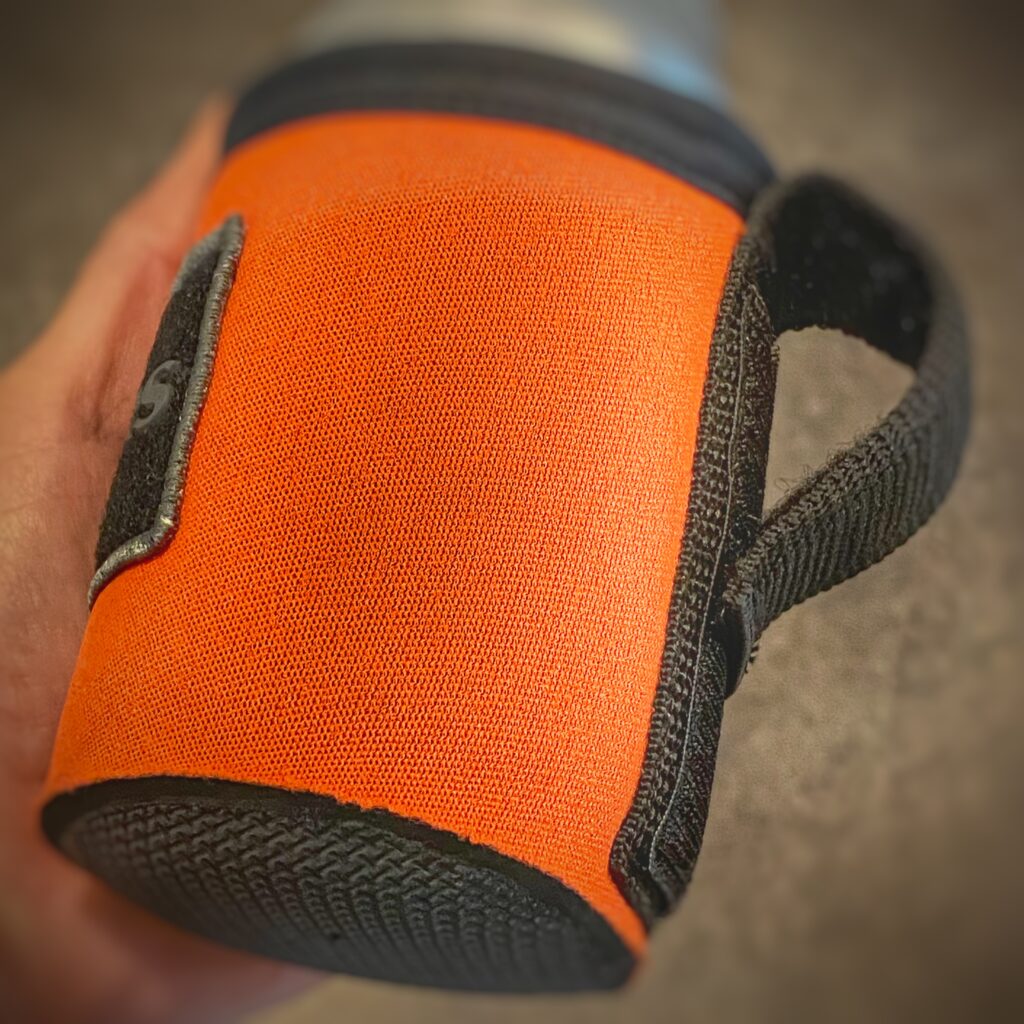
The first, and most influential reason for me is simple. WEIGHT. Made of durable neoprene, the sleeve weighs in at 1.6 oz. That’s right, ounces. I mean, it’s barely there and will still keep a drink cold enough for long enough in most of my scenarios. It’s so light, you could even carry 2 and surprise your fishing buddy with a brew out on the river—or bring two for yourself if you’re, you know, really “thirsty.” Only time will tell how well it holds up, but even if it needs to be replaced every few years, you’re talking 15 bucks here. I also like that the logo patch on the front of the one I chose doubles as a fly patch. Even if I never use it as such, I dig that. And there was one more, unexpected, thing I liked about it. On the reverse side, the velcro strap meant I could fasten it to the OUTSIDE of my pack hiking out, so my bag would still smell like the belly of a fish instead of the floor of a brewery.
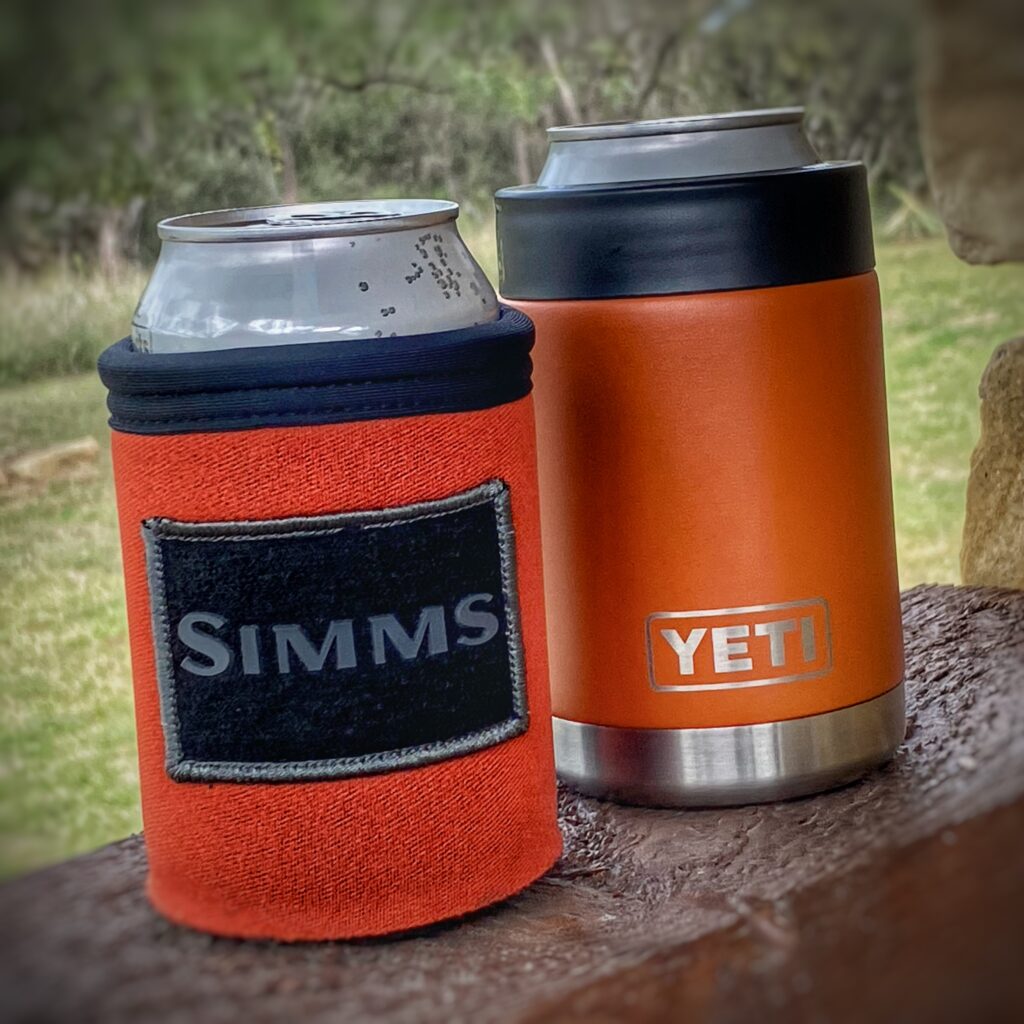
The verdict? Both the Yeti and the Simms are viable options for shuttling your favorite beverage with you to the river or on the trail. If they were boxers, one would be a heavyweight (packing a bigger punch) and one would be a flyweight (light on its feet). So set your priorities, pick your poison, and I’ll see you on the river. Cheers!
This soup is not, necessarily, “medicinal.” But I find the making and consumption of it is certainly therapeutic. There’s just something to preparing and eating slow food made from whole ingredients that soothes the soul. And if you’re taking this continued “social distancing” thing seriously, you might just still have extra time at home. If your kids are home too, make it with them…it’s fun to have them try to cut carrots with that not-as-sharp-as-you-would-use knife and watch, gleefully, as they shoot carrot coins across the kitchen.
SHOPPING
Buy a big ass chicken (whole). Organic if you can afford it. If not, get one with no antibiotics n stuff. Also pickup a bag of organic carrots, parsnips, a large onion (yellow or white), celery, a head of garlic, and any other herbs you think sound good with chicken (I sometimes like to use rosemary, thyme or marjoram). Also pick up a bundle of organic kale and/or rice. These are optional and I’ll get to that later.
MAKING THE STOCK
Give it a little sink bath like my mama did me when I was still tiny enough to fit in the kitchen sink, then put it in a large pot with a few stalks of celery, 3 or 4 cloves of chopped garlic, and one yellow or white onion (chopped into large pieces you can leave in or take out later). Salt and pepper to taste (I like a lot of pepper). This would also be the time to add herbs if you’re gonna. Add water until bird is just covered. Bring it to a boil and then reduce heat to a slow boil. Boil the shit out of it to get all that healthy goodness out. I mean until it’s practically falling apart. While it’s boiling, clean and chop the carrots and parsnips into whatever size chunks that suit you (don’t peel – keep those vitamins and nutrients on there). Also place a large colander into a large bowl.
BIRD OUT, VEGGIES IN
Once the bird is falling apart (I usually boil it for at least 2 hours…usually more), carefully (I use tongs for this) remove from the pot and deposit in the colander/bowl setup. And I mean carefully…it will come apart as you take it out so I usually try to grab the legs, then thigh/wings first and then can usually get hold of the rest. Go slow and be mindful not to let it drop into the boiling stock and scald your poor self. Set the bird aside to cool so you can pick the meat off later. Put the carrots & parsnips (& sweet potato if you wanna) into the stock-in-progress and let it continue the low boil. At this point, you might also use forks or your tongs to pull the meat in the colander a bit (especially the breast meat) to help it cool a little faster. This is also a good time to check the stock for salt. I’m guessing you’ll need a little more at this point. Sometimes I add it, and sometimes, I leave it and let folks salt their own portions. The veggies will continue to add flavor too. Oh, and if you put any full sprigs of herbs in, this is a good time to pull out the “twigs.”
FINAL PREP
This is also when you might want to start your rice cooking if you’d like to have some in the soup. That’s right, I cook the rice separately. If you put it in the soup, it will be really nice the first meal you serve…any bouts of leftovers will be a bloated, porridge-ish nightmare. Oh, and go ahead and wash and tear a couple leaves of that kale you got in to pretty small pieces…but don’t add it either.
Play guitar or the turntable for 30-45 minutes while soup-in-progress simmers and meat cools. When cool enough, pull the meat off the bones and add to pot. For some of the “longer” grain breast pieces, you may want to cut across once or twice to make them a bit smaller. Alternatively, if you really did get a big ass chicken as suggested, you likely have more meat than you really need, so you may want to set aside one of the breasts or a little more for another purpose. The dark meat is more flavorful in the soup anyhow. Technically, as long as your root veggies are tender, you’re pretty much there. But even so, letting it simmer a little longer will just make it all the more flavorful.
SERVE IT UP
You can serve it up as-is, but here’s my favorite way. Place a little of that torn kale in the bottom of the bowl (and/or rice, if you please), and ladle the piping hot soup over it. The liquid will blanch the kale to just the right tenderness without over-cooking it. Yum. Bon Appetite, y’all.
Though I have often picked up Jetboil systems and turned them over in my hands at outdoor stores and put them into online shopping carts several times, I could never seem to pull the trigger on one. Until now. For me, JetBoils were just too clunky, too heavy, and too narrow in application to earn a spot in my pack. And that permanent pot cozy just looked like the big top for a germ circus to me. Never mind that all of that neoprene and colorful plastic makes it look more at home surf-side filled with some fancy $10 smoothie, or maybe a bubble tea with one of those straws that looks more the proportion of a feeding tube.
I like simple stuff that just works, without a lot of fuss. And when I find it, I keep it for the long haul. For nearly 20 years, I’ve used an old Markill (no longer in business) Peak Igniter Titanium folding canister stove and a Snow Peak Ti-Mini Solo Combo (the version I have is discontinued so this link is to 2.0). And other than being relatively slow to boil and somewhat susceptible to wind, that little stove has worked like a champ. Especially when I use my sit pad as windscreen like in the pic below. Even the piezo igniter still works. The only change I make, sometimes, is that I’ve started subbing in a Toaks Light Titanium 650ml Pot for the Snow Peak set to shave weight and mass in my pack.

Over the years, new backpacking canister stoves and concepts have come and gone. I mean, the basic technology of the camp stove has changed little over the decades. The fuel sources vary—from isobutane to alcohol to biofuels. And the flames have gone from an easy bloom to an outright blowtorch trying to shave seconds off of that boiling time. But, essentially, they all put a fire under a pot to boil water or cook food. In the case of backpacking stoves, it’s mainly the former. And for the most part, the improvements that have come along over the years have been incremental. I’ve been mildly intrigued by a few offerings, but it was going to take more than a passing fancy to see me change course.
Enter Jetboil. Founded in 2001, it debuted its first products in 2003 at the Outdoor Retailers Trade Show. The MiniMo cook system was its first offering and represented 3 major innovations in backcountry camping stoves. First of all, it was sold as a system—a stove and cup/pot that locked together. The aluminum cup/pot also came with an insulating sleeve. But the real innovation was evident when you turned that vessel over to see the “fluxring” circling the bottom. It’s well known that a bigger pot with more surface area on the bottom boils water faster, but who wants to carry a big pot in their pack to boil water for 1 or 2 hikers? The fluxring was an attempt to “fold up” that surface area and weld it to the bottom of a smaller pot, creating a more efficient heat exchanger. And it worked. But the performance technology just couldn’t overcome the form factor enough to win me over.
For me, traditional Jetboil systems were just too clunky, too heavy, and too narrow in application to earn a spot in my pack. And that permanent pot cozy just
looked like the big top for a germ circus to me.
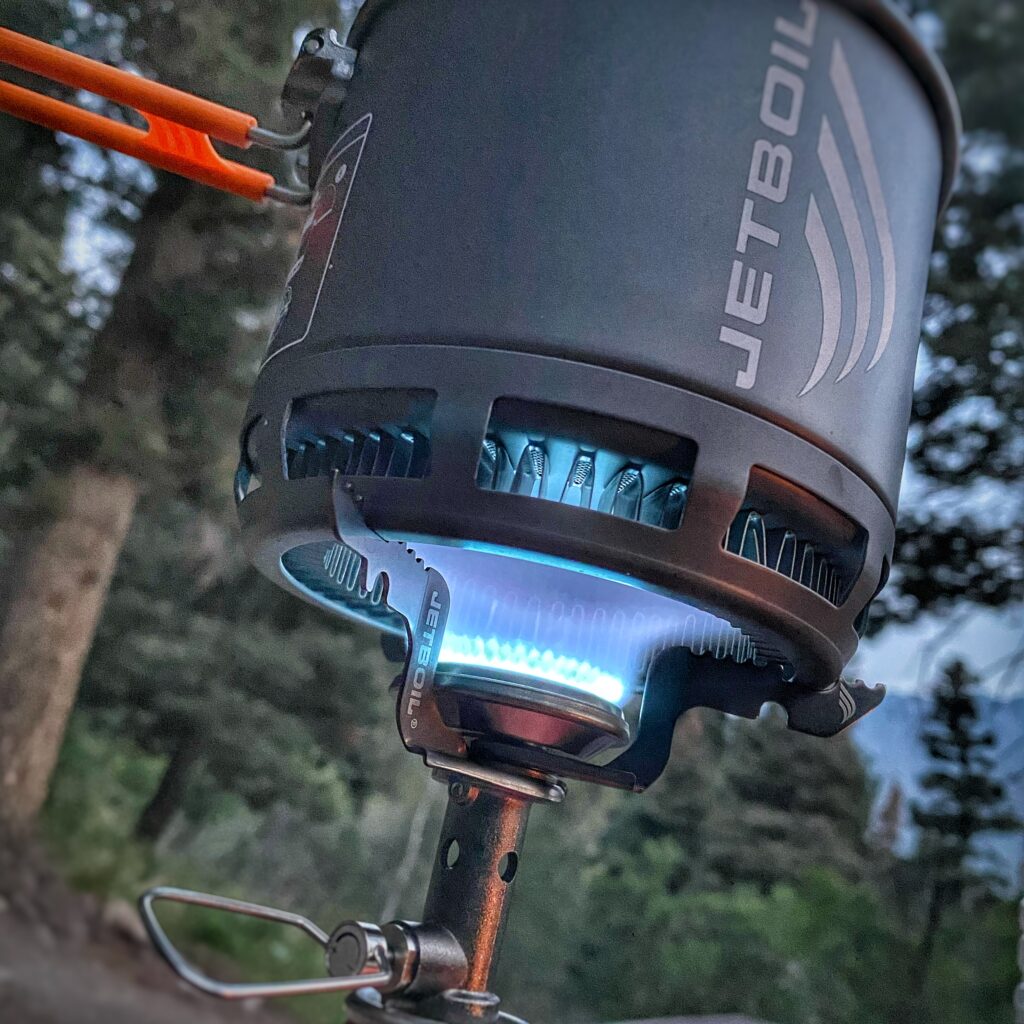
But that changed earlier this year with the release of the Jetboil Stash Cook Kit. The system includes an aluminum .8 liter pot with flux ring (and no nasty pot cozy), a fuel canister stand, a canister stove in a cute little bag so it doesn’t beat up your pot, and a plastic lid that holds a 100gm fuel can upside down with enough room to nest a mini bic lighter (which you’re going to need as the stove has no igniter). And while it has enough logos and garish lettering on it to give Times Square a run for its money, at least it looks and feels like a legitimate camping cook pot.
First, let me talk about what I don’t love about the system. Hate, actually. It’s heavier than what I carry now. The complete kit (sans fuel) is 7.4 oz, which is an additional ounce when compared to my current setup. I miss the ease of the igniter on my Markill, but don’t count the lighter in the Jetboil kit weight because I carry one in my pack already. It’s also bulkier than my former kit. The pot is a little higher capacity and built a little shorter and wider. That makes finding a nook for it in my pack a little more challenging.
JETBOIL STASH QUICK SPECS:
Weight: 7.4 oz, 210g
Capacity: 0.8 L
BTU: 4,500
Boil Time: 2:30 for 1 L
Fuel Efficiency: 12 L boiled / 100g Fuel
Pressure Regulator: Yes
Built-in Ignition: No
Storage Bag: No
All of the components nest handily in the pot, but there is only one way they can really fit so until you get the hang of it, it’s like playing a puzzle game every time you pack it up. Not my favorite thing when I just want to break camp quickly and get back on the trail to make some miles or down to the river to dance with some trout. JetBoil must have anticipated the added pain as they printed actual pack-up instructions on the pot and even positioning diagrams on the stove sack for how and where it must be placed.
Speaking of storage sacks, this kit doesn’t come with one, which I find pretty stingy when it retails for 129 bucks. Finally, I prefer titanium to aluminum for its strength, durability, and “feel.” I’m not rough on my gear, but I don’t baby it either and after 6 months in and out of my pack and van camping kitchen kit, I already have a bend in the bottom metal that shields the flux ring (see pic) that I attempted to bend back with my Leatherman multitool.
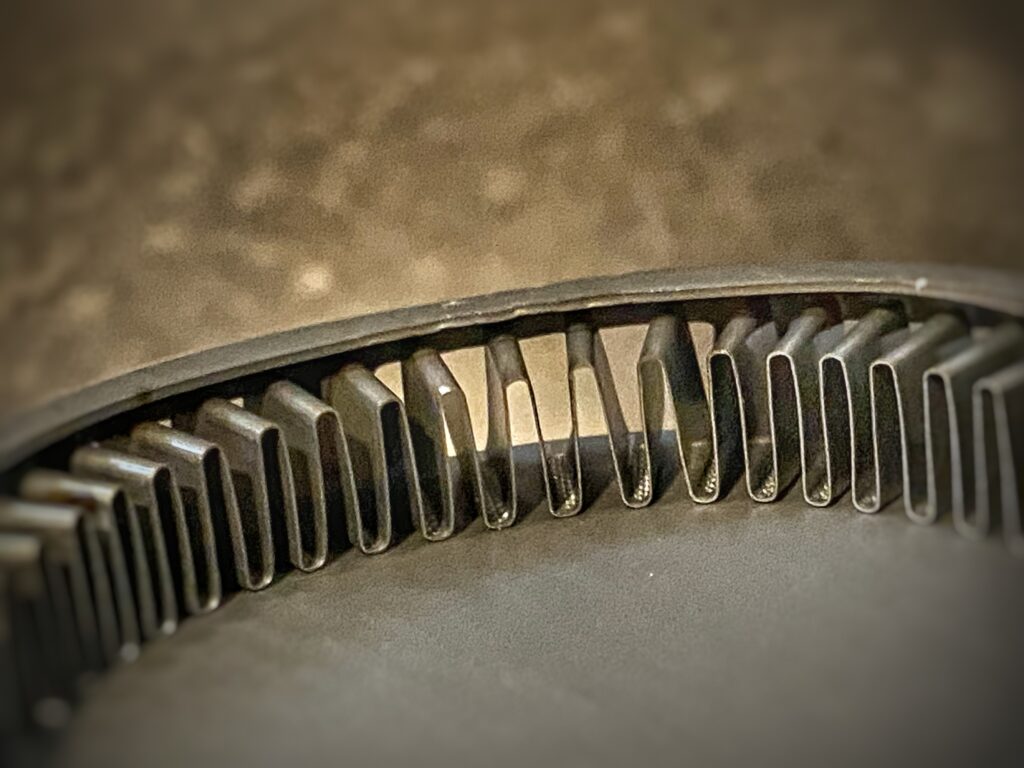
So why do I use it despite all that’s not to like? There’s really just one reason. Efficiency. And unfortunately for me, this reason alone is compelling enough to drown out my cacophony of complaints about the Stash. I can boil water for my 2-serving dehydrated meal in 2.5 minutes. Even less for coffee/tea water. This is especially noticeable when I want to make a hot lunch on a longer day hike. I would often forgo the luxury in that scenario because it already takes 20 minutes for most backpacking meals to rehydrate, and I didn’t want to have to wait several minutes more for the water to boil. Unless it’s an out and back trail with a lovely vista as the destination, an hour for a day hike lunch stop is a lifetime. It’s even forced me to adjust my routine at camp. I went from having several minutes to prep my fire lay while the water boiled for dinner to having barely time to scramble getting the meal bag prepped before the water boiled over.
So why do I use it despite all that’s not to like?
There’s really just one reason. Efficiency.
And unfortunately for me, this one reason is compelling enough to drown out my cacophony of complaints
about the Jetboil Stash.
And that efficiency is about more than just saving time at camp or on the trail. It’s also about saving money, weight, and hassle as well. How? Well, over the life of a camp cooking system that will be in service for several years, fuel is the biggest cost. And I can boil 12 liters with one 100g canister. That’s nearly twice as much water as the 6.4 liters I can get out of my old system. And that also translates into 2-3 extra trail days on one canister meaning that there is no need to carry a spare. So, about half the cost and half the weight in fuel. Cool.
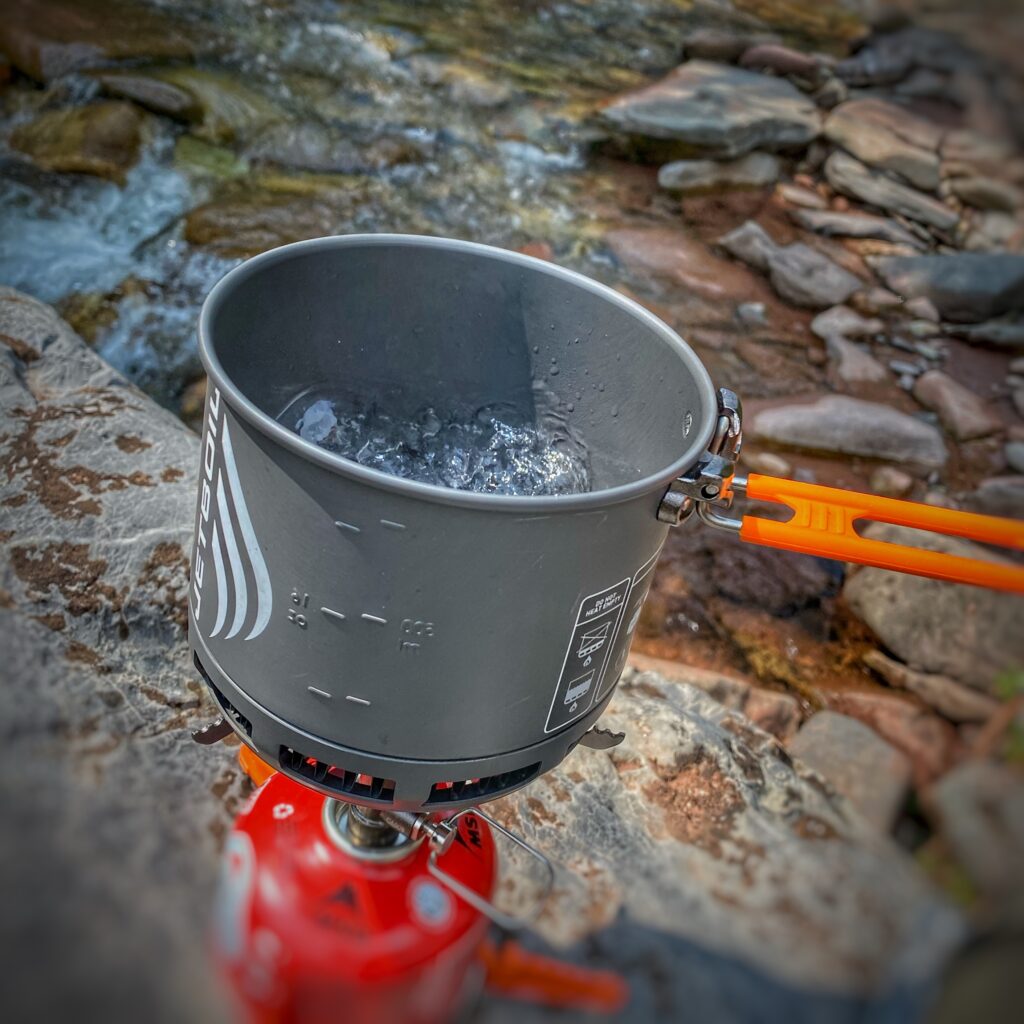
There are a couple other things about the system that I don’t hate. Like the fold-over, silicon-covered pot handle that secures the lid in transit and locks convincingly into place to offer your hand a solid purchase on the container when in use. I also like that the titanium stove arms, which are nice and long for an ultralight stove, have notches in them that fit the flux ring perfectly and keep it from sliding about. This is particularly helpful, and a lot safer, when uneven ground makes it virtually impossible for a level set up. I first thought the little plastic fuel canister stand would be wasted weight, but have found it quite handy, especially since the wider, higher-capacity pot makes for a pretty top-heavy contraption on a 100-gram fuel can. Finally, this system is actually decent at simmering, which can’t be said of most boil-at-the-speed-of-light rocket stoves.
Has Jetboil made the ultimate backpacking set up for those wanting a flexible system that balances weight and efficiency? Maybe. Have they finally made a system that has put their tech in a small and light enough package to lure me away from my trusty, beat-up old friend of a kit? Yup. But don’t think the old Markill has seen its last trail or made its last cup of coffee. Slow and steady still has its place in the race, and that little hottie will always be my first flame.
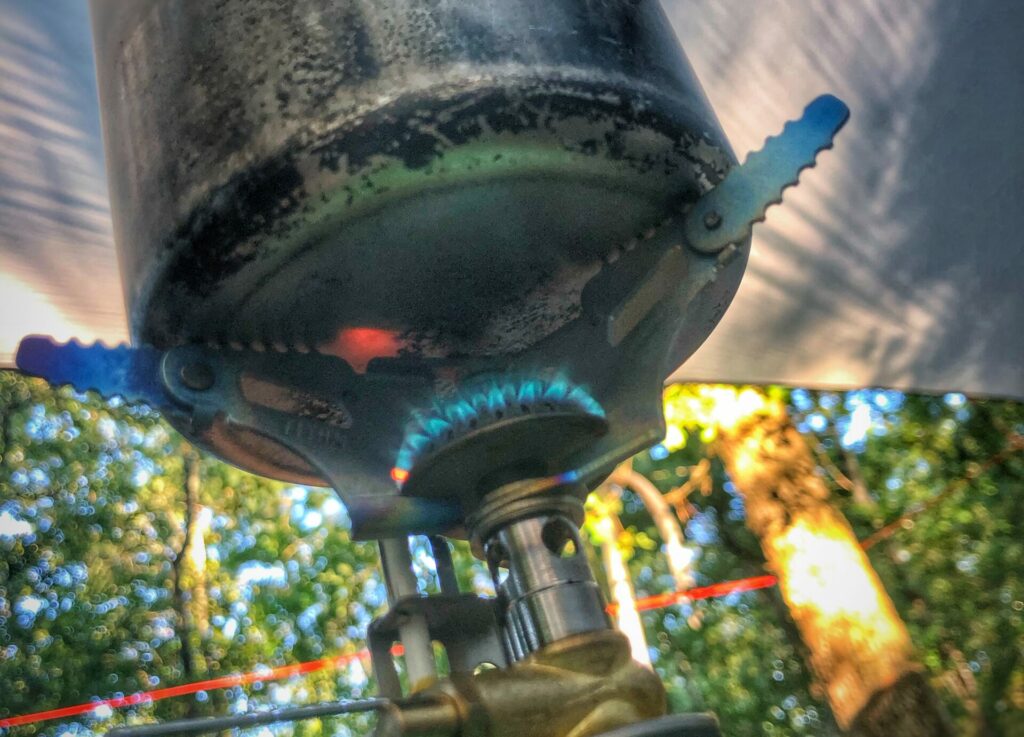
I woke up this morning with my heart and spirit feeling even more open and squishy than usual. Rather like a lobster having just shed its shell. On days like these, it’s as though I hover just below the surface of a good cry. Not sorrowful tears, but the sort that are born of an overflowing of what’s inside. Like there’s just not quite enough room in this little body for all that is welling up. I’m not even sure how to name it. Love, maybe, like the Agape version I learned about in Sunday School? The kind that is for everyone and everything. It hurts just a little, but with that sort of light, persistent tug that comes just to let you know it’s there.
I sat with my coffee, things to do but a compulsion to write. As I opened up my laptop, the web browser filled with one of the social media platforms, I saw a post that reminded me that today is the Autumnal Equinox. Never mind that it also comes on the heels of Monday night’s Harvest Moon. I don’t follow closely or understand completely how the movement of heavenly bodies impacts human energy and spirit, and it’s above my pay grade to understand how The Creator has connected it all. But I have gathered enough evidence through personal experience over the years to be clear that there is certainly something to it. A quick internet search on the topic uncovered this. “The Spiritual Significance of the Autumn Equinox can be referred to as our journey to perceive all information or observation only from the channels of our heart and not logic.” Well, that would certainly explain the “oh-golly-I’m-not-sure-I-can-keep-it-all-in-my-heart” thing. I think my “channels” might be at flood stage.
Unlike hearts, minds, and the egos that reside in them, are quite vulnerable to infection. Prejudice, judgment, hatred, anger, apathy, and a myriad of other bugs can easily take hold. And in this age of man, it seems this sort of “illness” has reached pandemic proportions among us. I mourn the losses, tangible and intangible, that continue to pile up as a result.
But it is not so with hearts. Hearts are immune to pathogens such as these. Hearts can be hidden away, ignored, oppressed, but never spoiled. I often wonder about what would happen if we all began, in earnest, to observe the world through the lens of our heart instead of that of our mind. And on a day like today, I don’t just wonder, I pray that we might. That we will. And that when we do, love will well up and overflow in a flood.
And I bet hate can’t swim in a love river.
It was a wonderful, restorative week spent in the upper regions of the Michigan mitten to celebrate my birthday. But there had been something I’d been chasing all week that, as of our last full day, had eluded me. I’d been fishing all my life, and fly fishing for several years by then—mostly on our Southern Indiana lakes, rivers and streams for warm-water species. I knew how to find and land most of our Hoosier-resident fish spin casting and on the fly. But I’d always wanted to stand in a river and land a wild, native trout on a fly rod.
Over the course of our stay, I haunted fly shops, watched local anglers, waded rivers, floated rivers, chased hatches and threw just about every bug and streamer pattern and size you can imagine to tighten a line on trout—any dang trout!! Though I was still empty-netted, we decided to make our last full travel day more about a river float. So we loaded up and headed for the Pine River, a stretch not guided or even reported by most Michigan outfitters. It’s tight, winding, and fast, with nearly 3 times the fall of most Michigan rivers. And it’s not stocked, nor home to any anadromous (migratory) fish. Only wild, native trout reside in its vastly varied depths. Stand up paddle boards, which was, in hindsight, an “interesting” choice for a fairly technical paddle on a river with class one rapids and lots of sub-surface debris, were the craft of the day, and while fishing wasn’t really on the menu, I did grab my trusty little glass 3-weight and laid it on the deck down the middle of the board between my feet. (Come on, being on water without a fishing rod is like going to a jam without an instrument).
45 minutes or so floating past the shady, deep waters of some really fishy-looking holes proved too much to bear and I pulled up on a sandbar on the inside of a bend opposite a particularly fine-looking one that begged just a few casts. The Pine is more of a nymphing than a dry-fly-fishing river, especially the middle of the afternoon in June. Never mind that I had none of the fancy dry flies I had scooped up on one of my many fly shop stops. So I tied on a generic-looking, fluffy little bead-eyed bug, made a couple of good back casts to get the distance I wanted, and gave it a toss up and across the river—let it drift—stripped it in. Nothing. I wasn’t even certain I was doing it right, and after a week of fervent failure, my expectations were anything but high. Another cast. Nada. Okay, one more.
Let it drift—let it swing—start stripping it in. And then bang, I felt it! That glorious tug at the end of the line that happens only when you’ve hooked a live one. And when that little sweetheart leapt from the dark, swirling water, I swear my ticker skipped a tock. D who was wading just around the bend, initially mistook my non-lingual squeals of joy as cries for help. Fortunately, I realized quickly that I sounded as though I might be drowning and shouted “I CAUGHT A FISH!” And then, with the confirmation provided by a second leap from the water, added “IT’S A TROUT, A TROUT!!!”
Now I’d heard some folks say that there was something magical about trout. And while I had long enjoyed the thrill of catching fish, especially on the fly, always thought that sounded a little too woo woo for me. But when I put my shaking, wetted hand under the belly of that little beast, heart pounding, and safely released it back to the boiling, tea-stained depths it calls home, I was a convert, a true believer.
At that point in my life, I’d likely caught thousands of fish. I’d fought tougher and landed bigger. But hooking that first wild trout on the fly standing knee-deep in the chilly water of a crystal clear river, a cloudless sky above, beneath the ancient gaze of the bending pines…that comes as close to the feeling of reeling in my very first fish as a child as I think it gets. And I owed that rehydrated moment of childhood wonder to a little brown speckled fish.
Fast forward to just a few weeks ago in the San Juans of Colorado. It had been a trip full of firsts. First fishing in CO, first above 10,000ft, first Cutthroat trout, first time on the Continental Divide, and so on. Each was a pretty cool experience, and worthy of sharing in due time. But ironically, this part of the story isn’t about any sort of first.
Our time in the colorful state was drawing to a close and the only trout known to inhabit some of the waters I had been fishing that I HADN’T landed was a Brown. And I had yet to trek up to the Cimarron where I had my “Last Dance at Dusk.” There had been so many banner days weaving my way along one pristine stream after another and fishing them until I was tired of catching fish that it hadn’t even occurred to me at that point. Or if it did, I wasn’t too concerned about it.
But on my last overnight backpacking/fishing trip hiking into a yet-unexplored section of what had proven to be a particularly stellar creek, I came upon its confluence with another of nearly equal reputation. This wasn’t the stretch I was aiming to fish, but the falls and seams created by the meeting of two powerful flows just looked to good to pass by. Besides, I was hiking with my JP Ross Peacemaker Sidekick in hand, so why not? Given the fast, turbulent flow, I took the time to tie on a pattern with a little more visibility as not to lose sight of the drift. I settled on a Royal Wulff. (Is it just me, or does anyone else think they look like flies with pigtails?) Once rigged, I made a modest couple of backcasts. One to stretch out the pool of line at my feet, and one to slip a little more to the right distance. Once the fly was hovering just above the base of one of the more aggressive falls, I let it fall to the surface. About 2 seconds into the drift, if you want to call it that, some feisty little beast crushed that cute bug and disappeared into the turbulent flow.
The combination of trout’s considerable size-to-strength ratio and swift current had me convinced I had hooked a monster. Like most creek quarry, once to net, it was clear that by size standards the fish was no trophy. But as my gaze caught the flash of red, gold & brown (no, not “red, gold & green” — children of the 80s just outed themselves) in the late afternoon sun, there was a flutter in my chest. And as I lifted the petite brown trout to release back into the depths of the pool, I swear my hand was shaking just a bit as my thinker caught up with my ticker and flashed back to that first dance with a wild Michigan native.
Maybe the old-timers are right. Trout are magic. And the only thing that comes close to a first-time experience is one that can take you right back to it.
The trip we mapped out was, in great part, to celebrate D’s October birthday. She said she wanted to visit the Southwest. And specifically The Grand Canyon. “You’ve already seen it,” I said. “Yes, but YOU haven’t,” she replied with a twinkle in her crisp brown eyes, “and one of the things I want for my birthday is to see your face when you witness it for the first time.”
That’s just like her, really. Seems we’re both sort of experience hoarders. She started grinning and giggling with anticipation about 45 minutes out. So as we made our initial approach and pulled the #CariVan into the car park, I suggested she lead the way and that I would look down until we were to a satisfactory “maiden” viewing spot. She kept chiding “now don’t look” as we walked arm in arm along the path…to which I happily and vehemently replied, “I’m not!” Once we were to a spot she deemed worthy I was allowed to look up.
The first few seconds were as follows: a little gasp into an awkward sort of euphoric, tearful laugh. Then I just stood there…silently…with tears streaming from beneath my glasses and running down my cheeks.

I don’t know about you, but I love sharing a bit of natural wonder with someone just as much as experiencing it myself. Think of a place in nature that awes or inspires you, then make a plan to take someone you know and love there with you for the first time. It doesn’t have to be far away or Grand-Canyon-Level either. Maybe it’s a little creek you know of or a hike with a killer view that’s in your own backyard. Then send me a note about it for a chance to be interviewed for the podcast. 🙂
I’ve been following the work of JP Ross for a while now. I first ran across his Muir pack rod, a 7-foot-5-piece fiberglass 3wt, several years ago when looking for a backpacking companion to chase wild and native trout deep in the backcountry. I’m a sucker for a lightweight glass rod, and I still plan to get one in my little paw at some point.
Anyhow, I digress. My recent pursuit of a rod to practice for Fly Fishing International’s Certified Casting Instructor Exam lead me to call the shop with some questions. To my surprise, the man himself answered the phone and we had the first of what have now been quite a few great conversations…mostly about fly fishing and a little about life (it’s all the same, you know). When you run across a kindred spirit it just sorta goes that way…like old friends who’ve just met.
I now have nearly every rod he makes—on my wish list—not just because the designs are solid, but also because I resonate so much with his philosophy around the importance of spending time outdoors. He builds these tools not just for precise execution, but with a view to enhance the experience of the caster. He’s a ZenFisher for sure. Buying 6 or 8 fly rods, however, is a bit much all at once. But I had to start somewhere. And when I read a little about his new rod with a split personality, The Peacemaker, I surmised it was the perfect tool for my trip to the San Juan Mountains of Southwestern Colorado.
The planned fishing excursions included both chasing native fish in creeks above 9000ft, where conditions can be tight and technical, as well as hiking up even farther to fish the Alpine lakes that feed some of them, where I wouldn’t have the benefit of a paddle craft or float tube for better access. So what makes The Peacemaker the perfect rod for this scenario? Well, it’s not really a rod, it’s rods (plural). While it can be ordered in either an 8ft 3wt in 3 pieces (803-3) or a 10.5ft 4wt in 4 pieces (1054-4), it can also be ordered in a configuration where both rods share the top two sections. Add one butt section with grip to them, and it’s the 803-3. Add a section with additional stripping guides and a different butt section instead, and it becomes the 1054-4. After fishing both configurations for a few weeks now, my mind is kinda blown. And I’m no stranger to high-performance fly rods.
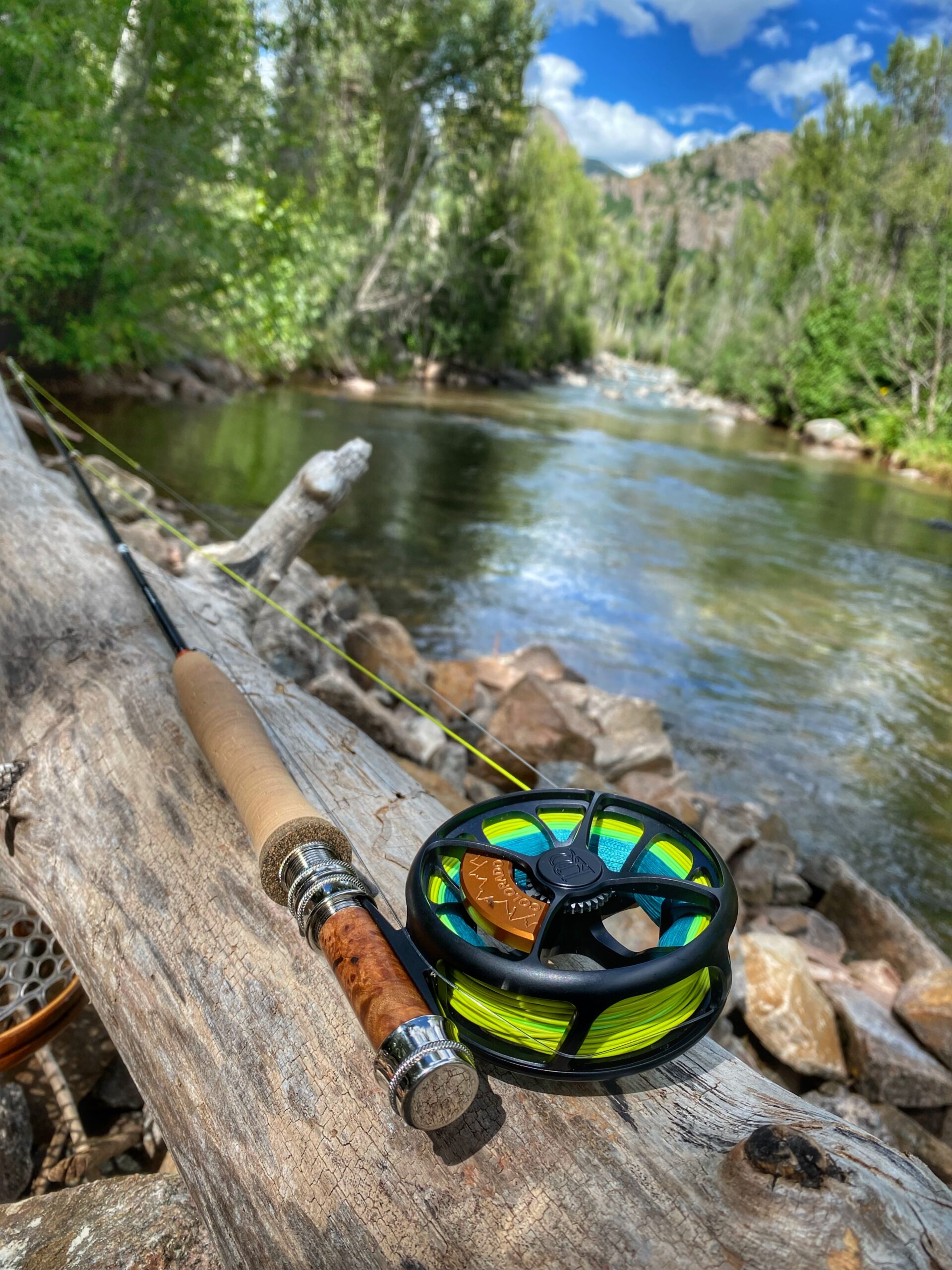
The shorter 3wt has become my new favorite creek rod for the sort situations I’ve been fishing recently. Since I’m packing it in to waters unknown to me, I take a reel spooled up with 3wt line and an additional spool with 4wt line. If the conditions call for shorter casts, I use the WF4F (weight forward 4wt) to load the rod in a little closer. If, conversely, I’m in a situation with crystal clear high-mountain runs packed with wary, wild quarry and nowhere to hide, I string up the WF3F and the thing becomes a monster of accuracy at distance. Seriously, I can place a dry fly right in the pocket at the head of a run from farther than is even legitimately fishable.
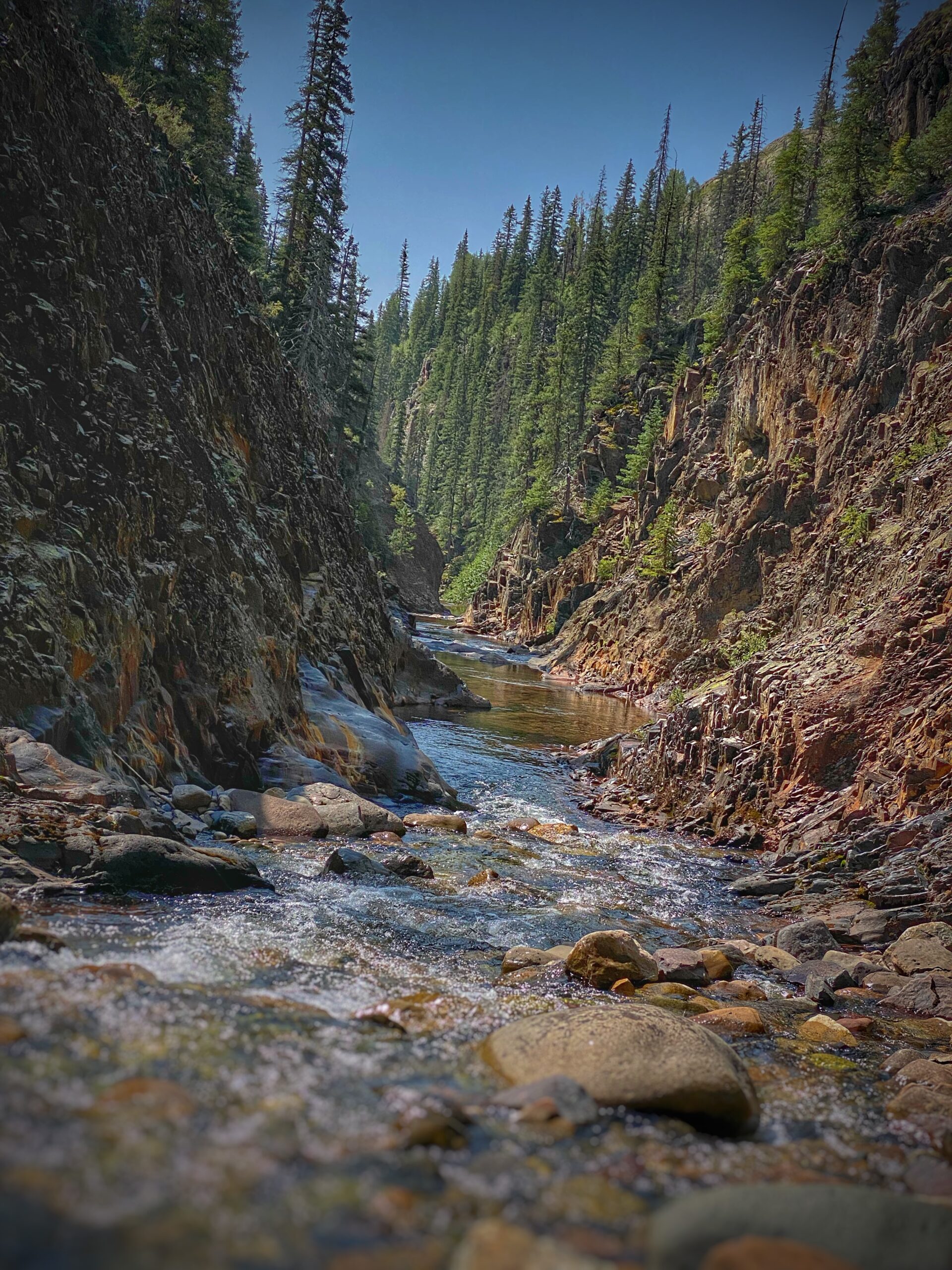
I learned that the hard way as I failed to hook up on several solid eats in a row when casting far up a narrow canyon where closer access wasn’t really practical. But that just wouldn’t do, and I am not easily dissuaded by impracticality. I wanted to make sure the misses weren’t just my poor timing. So I said a little prayer, put the rod between my teeth, and using the full compliment of hands and feet, shimmied across a slim ledge of slickrock alongside the pool to gain another 10 feet or so. Yup. That was the ticket. The next drift produced as solid take and set and brought a beautiful wild brook trout to hand. So it seems my fishable distance with this rod is limited only by the physics of the set with an 8-footer, not by our (my and the rod’s) ability to place an accurate cast. Sweet.
In theory, the 10.5ft version sounded like a dream for the alpine lake game. And it is in practice as well. But it did take a little adjustment to get into the rhythm and adjust my casting arc and pace to the pace of the rod. Sort of the way that a paddle craft has a terminal velocity. No matter how hard you paddle, your top speed is ultimately dictated by the specs of the boat. This rod asks, no, insists, that you go easy and SLOW THE HECK DOWN. Maybe he should have called it “The Pacemaker!” Nope, it doesn’t like to be pushed one little bit, but that’s just fine, it doesn’t need to be. It’s the poster child for letting the rod do the work. Relax into it, and long stable loops are like breathing. It can certainly handle 4wt line, which I’d recommend for light streamers and nymph/indicator situations and will be putting it to that use in the wide, braided rivers of Texas Hill Country soon enough. But I’m just smitten with it strung up with WF3F for dries on still water.

I have distance for days and the most delicate presentation with the long leaders used in those situations. In this case, the extra rod length also makes setting the hook more feasable at distance. It’ll pick up a truckload of line, too, which means the fly spends more time on the water (you know, where the fish live) and less time in the clouds (you know, where I live). While I haven’t used it in this application (yet), I imagine the extra foot-and-a-half over the standard 9er will make it a great kayak fly fishing rod as well. While the shorter rod is still my creek darling, casting this longer configuration is downright addictive.
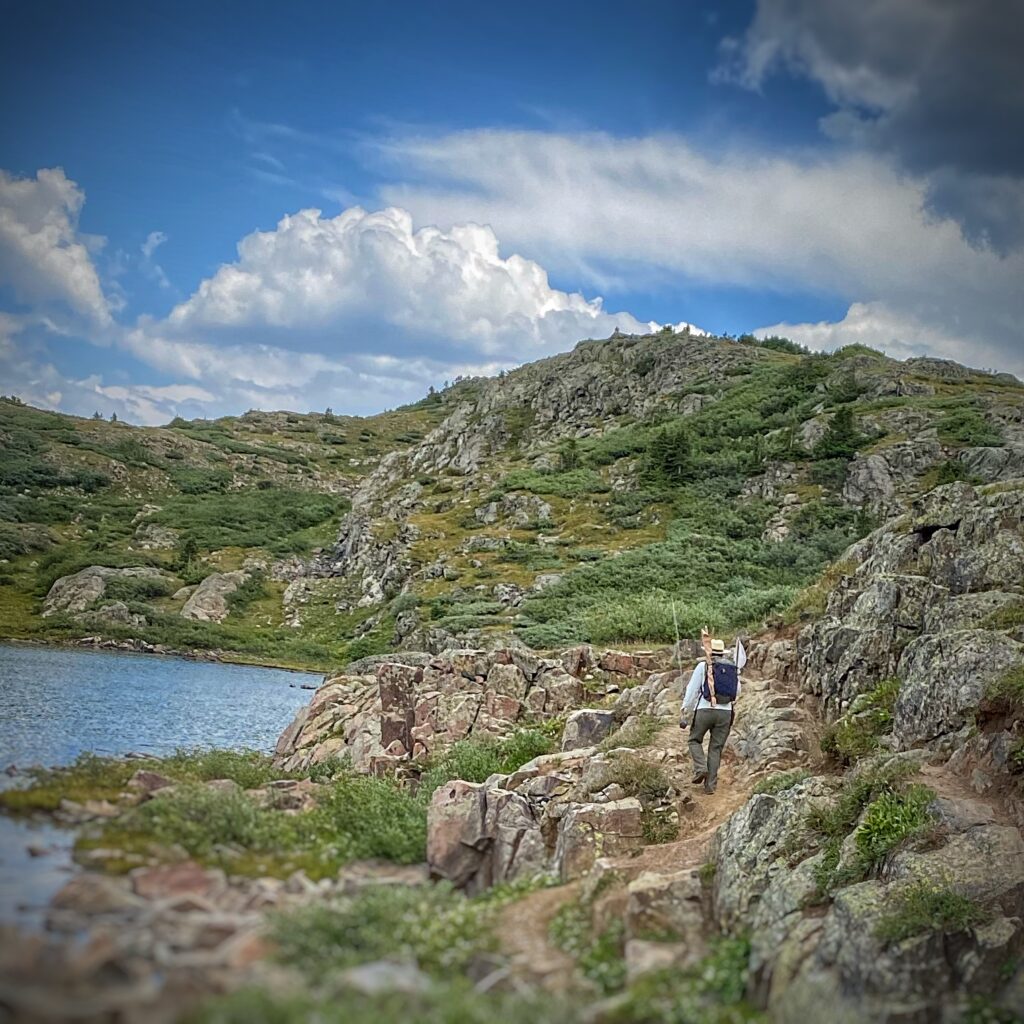
We recently traversed the 4×4 access road up to a trailhead at 11,000 ft and then hiked the additional 2.5 miles of distance and 1500 ft of elevation up the mountain to a cluster of alpine lakes. I hiked with the 8-footer in hand to fish the creek as we ascended while the 2 sections of the 10.5-footer were strapped to my pack so I could make the switch at the lakes. The sections are a little long for what I typically prefer in a “pack” rod, but the versatility is worth the larger form factor to me in that sort of scenario. Is this an Appalachian backcountry rod? Probably not. But it wasn’t designed to be. JP has built his brand on small stream rods for the short game and has plenty of options that fit that bill, namely the Muir and his Beaver Meadow series in carbon and s-glass. The Peacemaker is another animal entirely.
Ross isn’t just a rod builder, he’s a rod designer. And “designer” is an important distinction to note. There are lots of “builders” who wrap and build rods on blanks they purchase from other manufacturers, which is cool. But that’s not the case here. These tapers and composite applications are designed and developed by JP, manufactured, and then wrapped/built in his shop. Not only did my fly rod sections show up beautifully appointed with my requested and preferred down-locking reel seats in burled wood and coordinating agate stripping guides, JP took it upon himself to add my name to the 10.5ft butt section and “Fisher of Zen” to its 8ft sibling. Nice, thoughtful touch. My understanding is that he designed the longer rod specifically for a canoe float on an Adirondack river where conditions called for dapping. It has since become a go-to rod for many anglers (like me) as they have continued to push it well beyond its intended purpose. I’m not sure if that’s because they want to see what it can do or because they just don’t want to put down a rod that puts such a goofy, nearly embarrassing grin on your mug every time you cast it.
Winner, winner, fish for dinner. (JK, I’m mainly a catch-and-release sort of gal)






